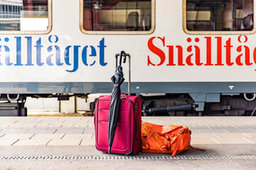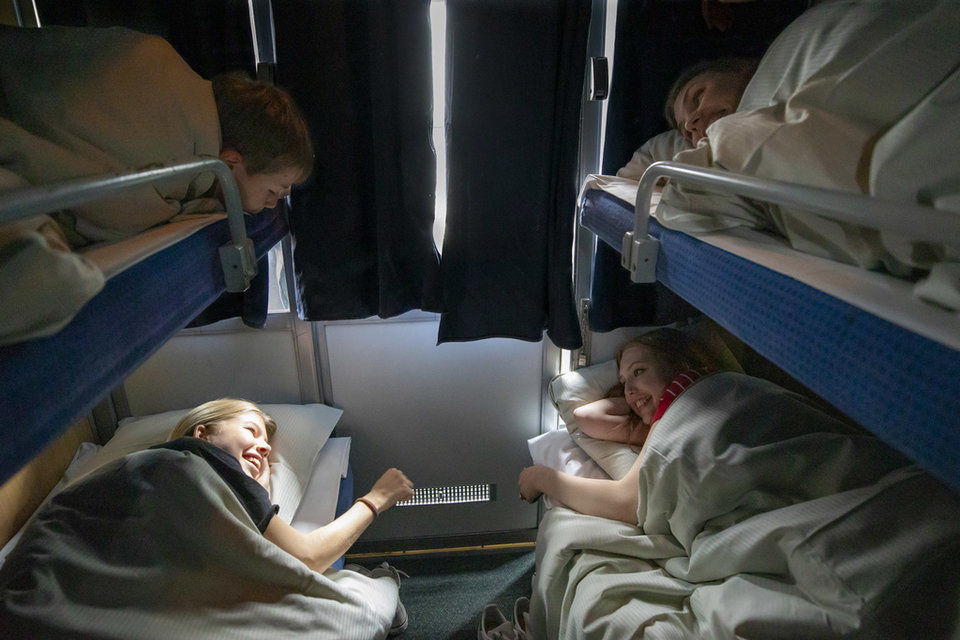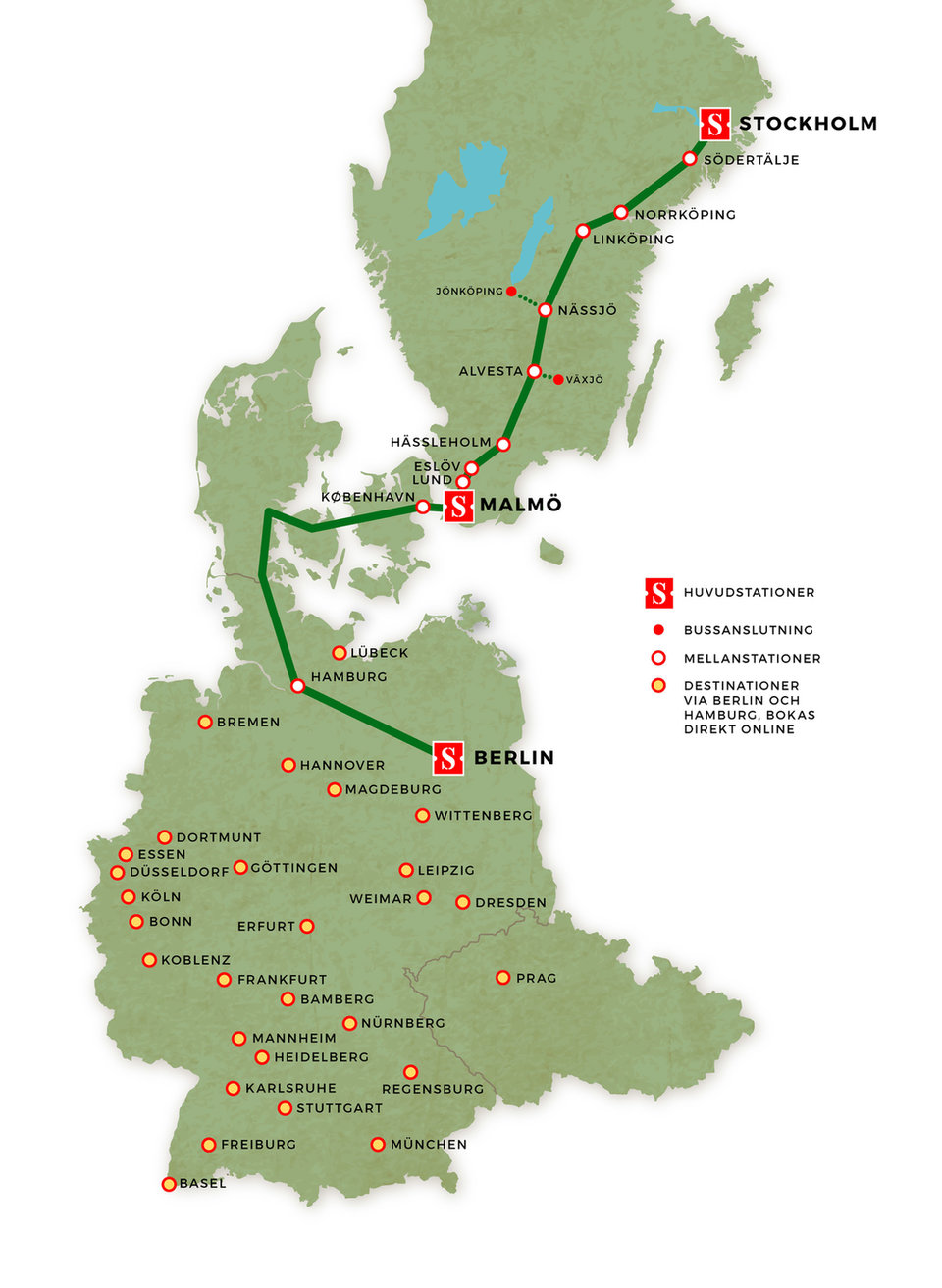Routes
All aboard the Stockholm–Berlin night train
In 2020, the Covid-19 pandemic led to the cancellation of the Malmö–Berlin train route. A year later, Swedish operator Snälltåget has launched a new night train service to link Sweden, Denmark, and Germany. Ilaria Grasso Macola profiles the new railway to find out how it came to be and how it fits within the bigger night train renaissance at EU level.
Ayear after the cancellation of the Malmö–Berlin route as a result of the Covid-19 pandemic – and the subsequent travel restrictions – Swedish rail operator Snälltåget recently inaugurated a new night train service from Sweden to Germany, via Denmark.
Linking the three countries via train for the first time in 30 years, the Stockholm–Berlin night train has replaced the Malmö–Berlin route, which operated between 2012 and 2019 through a ferry connection between the Swedish and German cities of Trelleborg and Sassnitz.
“We have been running night trains between Malmö and Berlin since 2012 and believe in its potential,” comments Snälltåget business manager Carl Adam Holmberg. “That is why we are investing in more departures and a completely new route.”
As reported by The Local Denmark, the service is the first international night train to stop in Denmark since 2014, when the railway line connecting the country to Switzerland was axed by the operator City Night Line.
Network Rail CEO Andrew Haines. Credit: Network Rail

A focus on comfort and sustainability
Night trains depart each day at 4:20pm from Stockholm’s central station and – after passing through Malmö, crossing the Öresund bridge to the Copenhagen region (the first night train service to do so), and Hamburg – arriving in Berlin 08:52am the next day.
Travellers can choose from different levels of comfort, starting from spending the night on one of the train’s basic reserved seats to wider reclining seats, where passengers are given bedding and are entitled to occupy two seats.
Passengers that opt for the complete night train experience can also choose to sleep in one of the sleep compartments, even though Snälltåget does not currently accept solo bookings due to the pandemic.
The train also has two restaurants, as well as Wi-Fi, power outlets, and two toilets per carriage.
On a more structural level, trains operating on the Stockholm–Berlin service use carriages that were renovated in 2019 by Snälltåget’s mother company, French public transport multinational Transdev.
In order to achieve the objectives of the European Green Deal, only transparent and fair competition will allow the rail offer and the quality of service to increase.
“The Stockholm–Malmö–Copenhagen–Hamburg–Berlin route will be operated with the international carriages that Snälltåget invested in last year, but coaches will also be available,” read a company statement dated June 2020.
To mitigate the environmental impact, Snälltåget only uses green energy sources – especially water, wind, and solar sources – to operate the trains on the Stockholm–Berlin line.
“In all three countries, the locomotives will use renewable electricity, in order to minimise the environmental impact,” continued the statement.
“To achieve the objectives of the European Green Deal, only transparent and fair competition will allow the rail offer and the quality of service to increase, thanks in particular to operators such as Snälltåget,” commented Transdev in a June 2021 statement.
“This new open-access service, operated without any public subsidy, is Transdev/Snälltåget’s contribution to the debate on the development of competitive night train services in Europe.
“They are essential to achieve our climate goals, as a concrete alternative to air transport.”

French Prime Minister Jean Castex leaves the Paris-Nice night train after it arrives at Nice-Ville station on 21 May 2021 having completed its inaugural journey from Paris. (Photo by Anne-Christine Poujoulat/AFP via Getty Images)
Joining the European night train revolution
“We believe that the travel market will look completely different after the pandemic and the demand for environmentally friendly trains between Sweden and Germany will increase. We are therefore planning for more departures and a completely new route for the cross-border night train.”
With these words, Snälltåget head of sales and marketing Marco Andersson has outlined Snälltåget’s plan to join the night train network that has been growing all across Europe. In fact, the company is working towards launching new international destinations, including several German cities and Prague.
“We want to make it easy and affordable to travel sustainably in Europe,” commented Holmberg. “Get on board in Stockholm, wake up in Berlin, spend a weekend in the German capital and then go on to Munich, Dresden, or Cologne.”

French Prime Minister Jean Castex leaves the Paris-Nice night train after it arrives at Nice-Ville station on 21 May 2021 having completed its inaugural journey from Paris. (Photo by Anne-Christine Poujoulat/AFP via Getty Images)
Snälltåget is not the only European rail operator that is investing in bringing back national and international night trains. In May 2021, French Prime Minister Jean Castex inaugurated the Paris–Nice night train, four years after it was cancelled due to financial reasons.
As a result of the pandemic, alongside a larger focus on the environment from both the government and passengers, in 2020 French President Emmanuel Macron announced the decision to restart night trains.
The French Government is not only focusing on increasing national night train service but has also announced that international routes such as Vienna–Monaco–Paris and Paris–Berlin will be available between the end of 2021 and 2023.
All images: Snälltåget